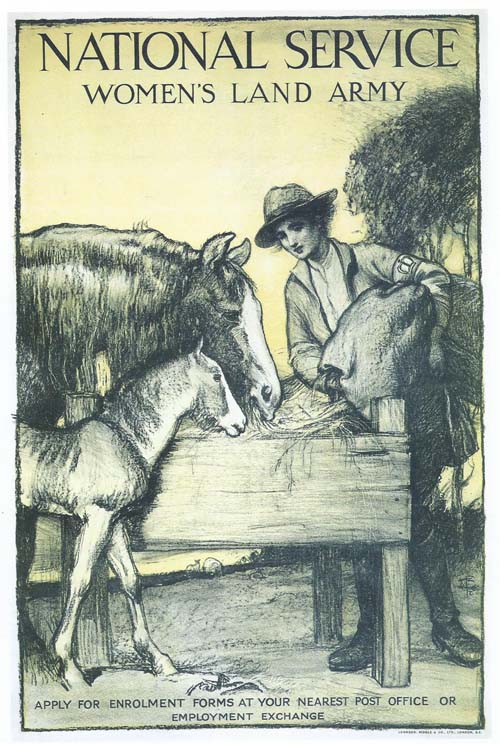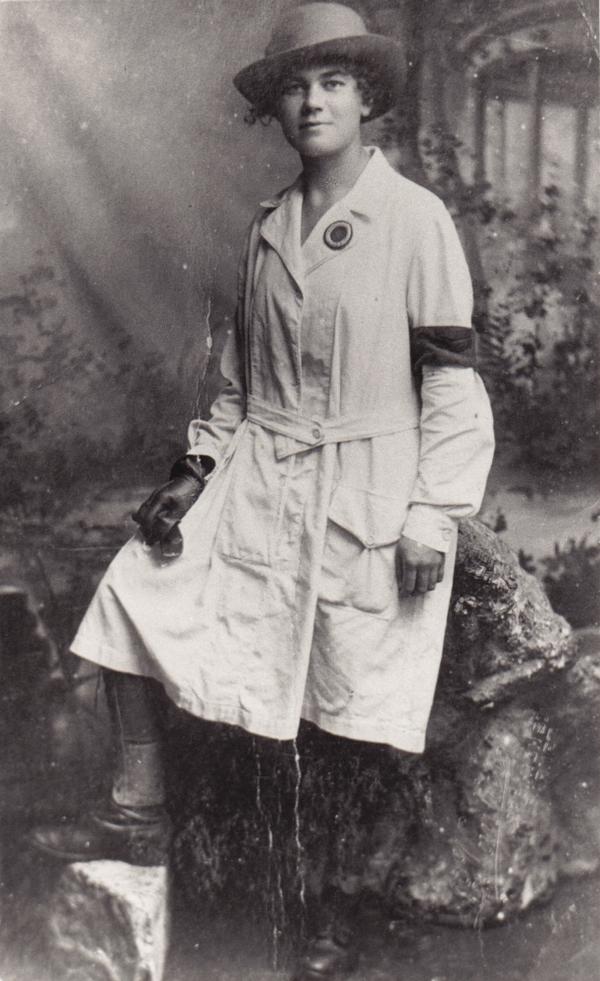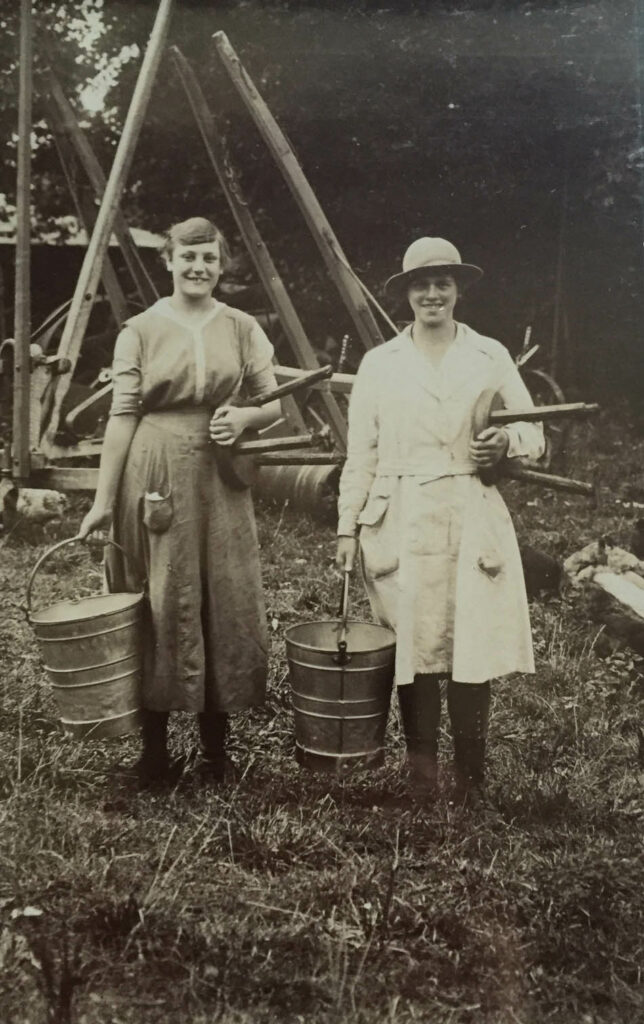This page shares recruitment posters which the Women’s Land Army used during the First World War to encourage women to join the civilian organisation.
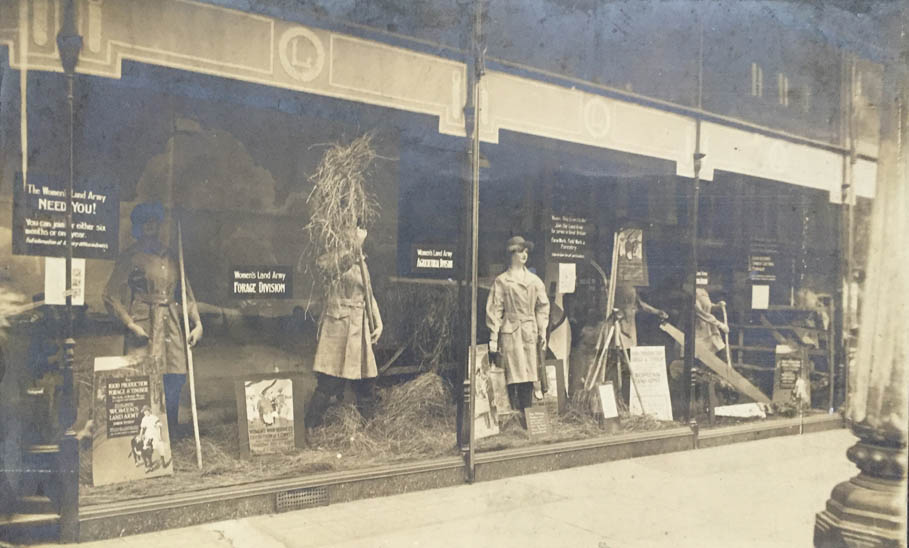
Source: Catherine Procter WLA Collection
Timeline
- Spring 1917: Recruitment to the Women’s Land Army [WLA] was the responsibility of the government’s National Service Ministry
- 26 March 1917: WLA training began.
- August 1917: The Women’s Section of the Food Production Department of the Board of Agriculture took over recruitment.
- July 1917: 2000 women had been placed on farms. (An initial 30,000 women responded; half were rejected.)
- September 1917: 247 training centres and 140 ‘practice farms’ had been set up.
- By the end of the war. 23,000 women successfully passed through training centres. These new full-time WLA land workers were in addition to around 300,000 part-time/ seasonal women who took up agricultural work during the Great War.
How to get women interested?
Recruitment posters, suggesting that Britain was on the verge of starvation, appealed to “Women of England! Wake up and answer your country’s urgent call for help”. Local WLA rallies raised interest in the WLA and showed members in their working uniform. Would-be recruits were directed to their nearest Employment Exchange to volunteer or to a local Village Registrar.
![Recruiting poster [updated. c 1917] “A Landswoman’s Appeal To all Women In The Land…Join The Land Army To-day. Don’t Hesitate.” Courtesy of Stuart Antrobus](https://www.womenslandarmy.co.uk/wp-content/uploads/2014/03/WLA-WW1-1917-poster-A-Landswomans-Appeal-To-all-Women-In-The-Land-659x1024.jpg)
Courtesy of Stuart Antrobus
The Interview
A local Selection Committee or Board, formed of members of the Women’s War Agricultural Committee in each county, questioned female applicants as to:
- their health
- physical capabilities
- reasons for wishing to do land work
They had to be medically examined, free of cost.
Women who had previous experience in agriculture and were not already in work, were given priority. Women over the age of 20 were also preferred.
The committees were also looking for women with a stable temperament, so that they could cope with possible loneliness on isolated farms. ‘A good constitution’ was also an important quality for an applicant – work on the land was hard graft!
After the interview
If recruits were prepared to sign on for 12 months, they could choose whether to work in either the Forage, Agricultural or Timber Cutting sections. But if volunteers were only prepared to sign on for six months, they had to join either the Agricultural or Timber Cutting sections of the WLA. All recruits had to be willing to go to wherever in the country they were required. They were given free railway warrants to get there.
Experienced women went straight into paid work on farms. Inexperienced recruits attended organised training centres or ‘practice farms’ for 4 (later 6) weeks. Successful trainees who passed the ‘efficiency test’ were found work on farms; unsuccessful women were deemed ‘unfit’.
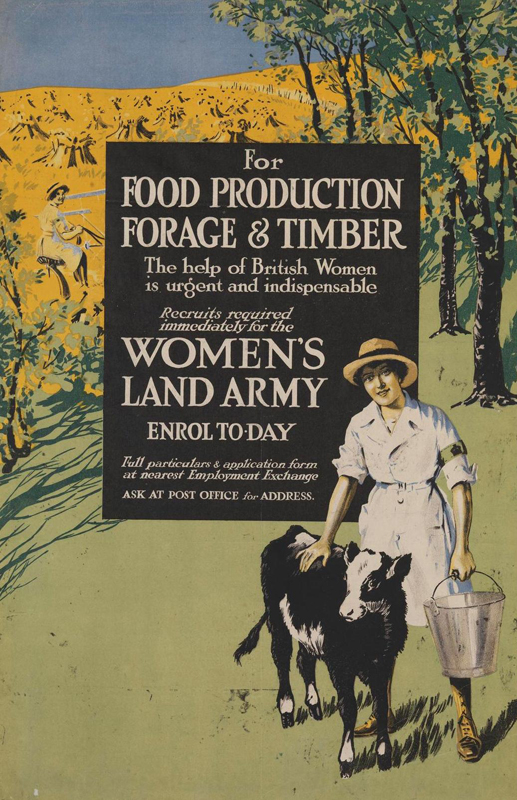
Source: Art.IWM PST 5489, c.1918
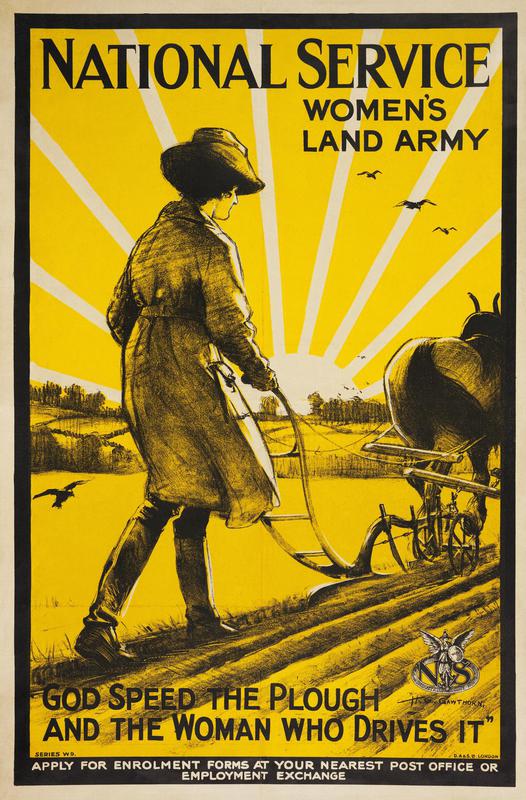
Source: Art.IWM PST 5996, 1917
In the archives
- An Enrolment Form women filled in to confirm their acceptance of working for the Land Army.
- Terms and Conditions for the Agriculture section.
Summary adapted by Stuart Antrobus from The Women’s Land Army: a Portrait (Gill Clarke)
